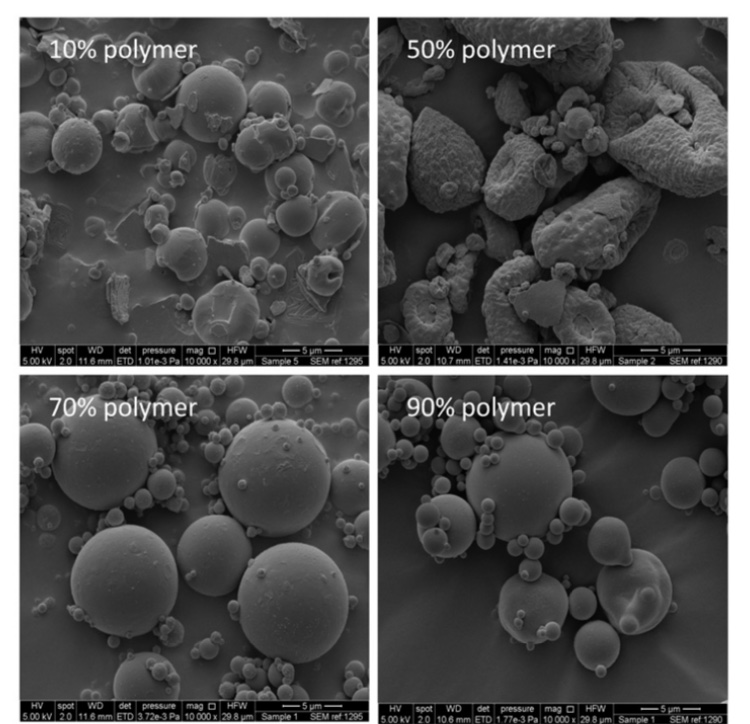Crystallisation in printed droplets: understanding crystallisation of D-mannitol polymorphs

Crystallisation of mannitol in the confinement of inkjet printed droplets was studied; the effects of droplet size and the presence of a foreign surface were investigated in comparison to the commonly used manufacturing technique of spray drying. Only the metastable polymorphs (α and δ) were observed in printed droplets with predominance of the α polymorph with increasing the droplet size, except for the smallest droplets generated (∼100 pL) where the stable β polymorph was observed.
The β polymorph was also predominant in spray-dried samples, with metastable forms appearing upon the addition of a polymer (Eudragit). We propose a dependence of the crystallisation of mannitol polymorphs on either the presence or absence of a surface to favour either the stable or the metastable polymorphs. These findings expand the experimental work that could be conducted to understand the crystallisation behaviour in droplets. By proposing heterogeneous nucleation to favour the formation of the metastable polymorphs while homogeneous nucleation favouring the stable β polymorph, one might understand why the same manufacturing method such as spray drying would produce one polymorph when processed alone but another when present in a formulation. This is of great importance to the pharmaceutical industry to aid in understanding the implications of crystallisation in manufacturing processes such as spray drying. Continue reading this open access article on mannitol polymorphism

